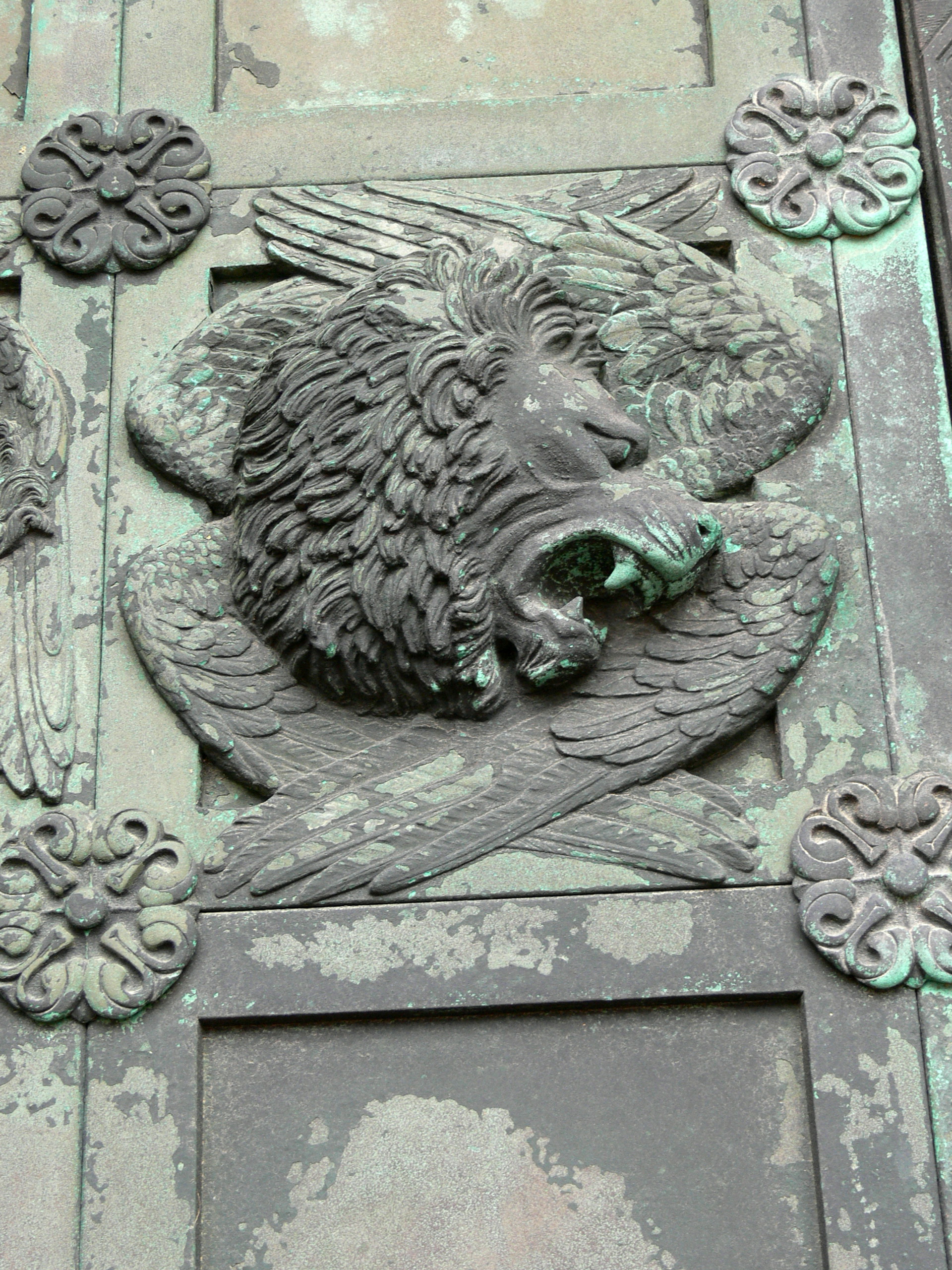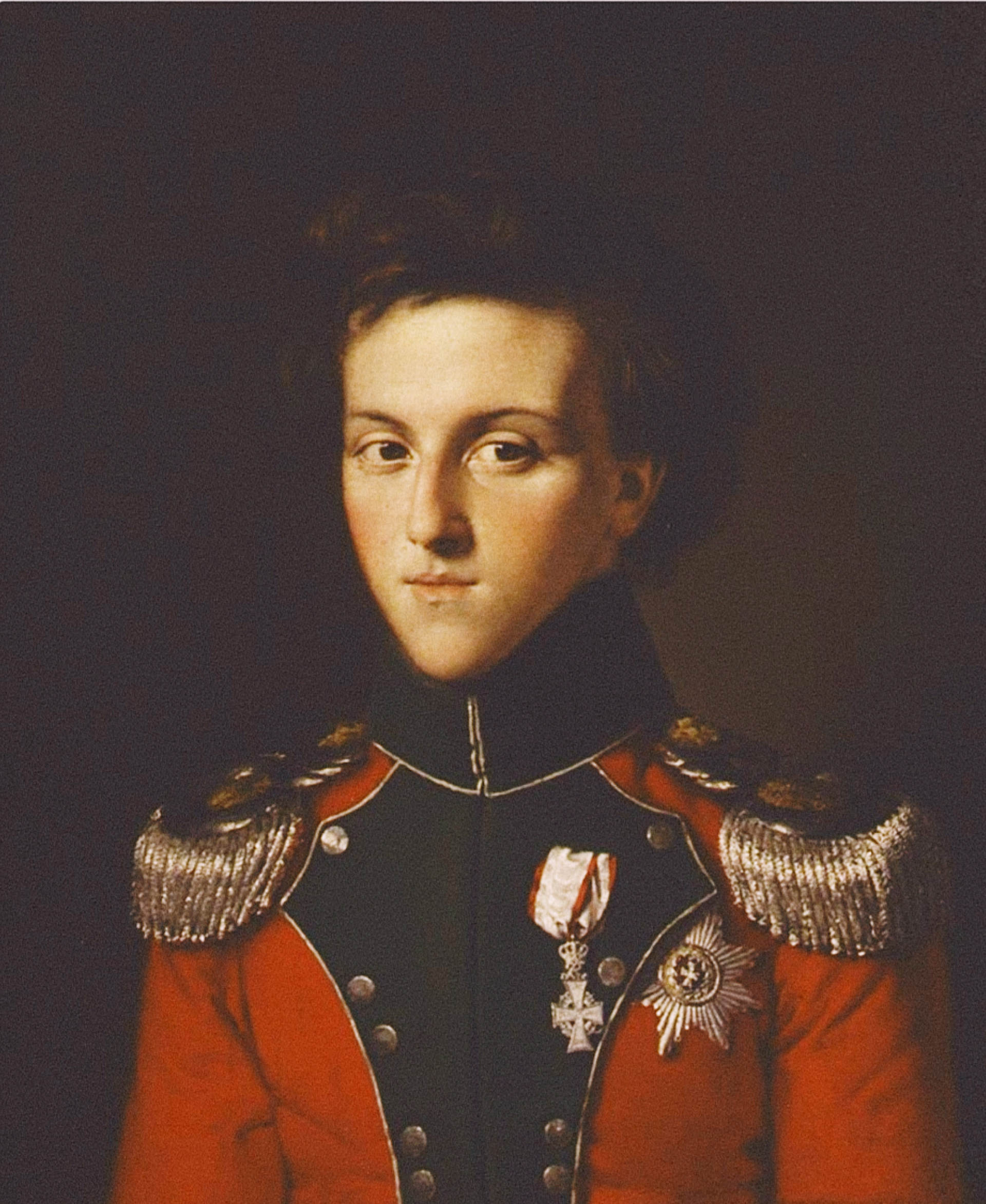|
Civiletatens Materialgård
Civiletatens Materialgård is a former storage facility at Frederiksholms Kanal, Frederiksholm Canal in Copenhagen, Denmark. The complex was used for the storing of materials used for the royal palaces but also has a long history as home and work place for sculptors associated with the Royal Danish Academy of Fine Arts. Together with the adjacent ''Fæstningens Materialgård'', its military counterpart, and the Royal Horse Guards Barracks (Copenhagen), Royal Horse Guards Barracks, it forms a cluster of low, yellow-washed buildings alongside Frederiksholms Kanal, Frederiksholm Canal. It now houses the Art Academy's School of Sculptury as well as residences. History The long main building facing the canal was originally designed by Jacob Fortling. shortly before his death in 1761, and subsequently completed by court architect Georg David Anthon, roughly to that design, in 1771. The complex was used for the storing of materials and building parts and furnishings for the royal palaces ... [...More Info...] [...Related Items...] OR: [Wikipedia] [Google] [Baidu] |
Denmark 0048
Denmark is a Nordic countries, Nordic country in Northern Europe. It is the metropole and most populous constituent of the Kingdom of Denmark,, . also known as the Danish Realm, a constitutionally unitary state that includes the Autonomous administrative division, autonomous territories of the Faroe Islands and Greenland in the north Atlantic Ocean.* * * Metropolitan Denmark, also called "continental Denmark" or "Denmark proper", consists of the northern Jutland peninsula and an archipelago of 406 islands. It is the southernmost of the Scandinavian countries, lying southwest of Sweden, south of Norway, and north of Germany, with which it shares a short border. Denmark proper is situated between the North Sea to the west and the Baltic Sea to the east.The island of Bornholm is offset to the east of the rest of the country, in the Baltic Sea. The Kingdom of Denmark, including the Faroe Islands and Greenland, has roughly List of islands of Denmark, 1,400 islands greater than in ... [...More Info...] [...Related Items...] OR: [Wikipedia] [Google] [Baidu] |
Church Of Holmen
The Holmen Church () is a Parish church in central Copenhagen in Denmark, on the street called Holmens Kanal. First built as an anchor forge in 1563, it was converted into a naval church by Christian IV. It is famous for having hosted the wedding in 1967 between Margrethe II of Denmark, queen of Denmark between 1972 and 2024, and Prince Henrik. It is the burial site of such notabilities as naval heroes Niels Juel and Peter Tordenskjold, and composer Niels Wilhelm Gade, and contains artwork by, among others, Bertel Thorvaldsen and Karel van Mander. The church building The appearance of the Holmen Church today closely resembles that of the renovation in 1872, except for the colour. The windows are in clear glass and predominantly set in iron. The spire is dressed in copper just like small spire on the confessional's roof. The church is of Lutheran denomination. Interior The church's pipe organ was originally made by Lambert Daniel Kastens and installed in 1738, and the façade ... [...More Info...] [...Related Items...] OR: [Wikipedia] [Google] [Baidu] |
Anne Marie Carl-Nielsen
Anne Marie Carl-Nielsen (born Anne Marie Brodersen; 21 June 1863 – 21 February 1945) was a Danish Sculpture, sculptor. Her preferred themes were domestic animals and people, with an intense, naturalistic portrayal of movements and sentiments. She also depicted themes from Nordic mythology. She was "one of the first women to be taken seriously as a sculptor," a trend-setter in Danish art for most of her life. She was married to the Danish composer Carl Nielsen. Early life Brodersen was born on Thygesminde, a large farm estate in South Stenderup, near Kolding. Her father Povl Julius Brodersen served in the German Confederation, German Dragoons before purchasing the farm. He married Friderikke Johanne Kirstine Gilling, who was his housekeeper. The Brodersens were "successful, daring people", some of the first to import livestock directly from England. Anne Marie was thus familiar with farming and animals from an early age. Her first work, a small sheep using clay from the f ... [...More Info...] [...Related Items...] OR: [Wikipedia] [Google] [Baidu] |
Christiansborg Palace
Christiansborg Palace (, ) is a palace and government building on the islet of Slotsholmen in central Copenhagen, Denmark. It is the seat of the Danish Parliament (), the Danish Prime Minister's Office, and the Supreme Court of Denmark. Also, several parts of the palace are used by the Danish monarch, including the Royal Reception Rooms, the Palace Chapel and the Royal Stables. The palace is thus home to the three supreme powers: the executive power, the legislative power, and the judicial power. It is the only building in the world that houses all three of a country's branches of government. The name Christiansborg is thus also frequently used as a metonym for the Danish political system, and colloquially it is often referred to as ''Rigsborgen'' ('the castle of the realm') or simply ''Borgen'' ('the castle'). The present building, the third with this name, is the last in a series of successive castles and palaces constructed on the same site since the erection of the fi ... [...More Info...] [...Related Items...] OR: [Wikipedia] [Google] [Baidu] |
Frederick VII Of Denmark
Frederick VII (Frederik Carl Christian; 6 October 1808 – 15 November 1863) was King of Denmark from 1848 to 1863. He was the last Danish monarch of the older Royal branch of the House of Oldenburg and the last monarch, king of Denmark to rule as an absolute monarch. During his reign, he signed a Constitution of Denmark, constitution that established a Danish parliament and made the country a constitutional monarchy. Frederick's royal mottos of Danish monarchs, motto was ''Folkets Kærlighed, min Styrke'' (Danish language, Danish for ''the People's Love, my Strength''). Early life The future King Frederick VII was born at 11 a.m. on 6 October 1808 at his parents' residence ''Levetzau's Palace'', an 18th-century palace which forms part of the Amalienborg Palace complex in central Copenhagen. Born into the House of Oldenburg, the royal house which had ruled Denmark since its foundation there in the 15th century, he was the second, but eldest surviving, child to the then Chri ... [...More Info...] [...Related Items...] OR: [Wikipedia] [Google] [Baidu] |
Fredericia
Fredericia () is a town located in Fredericia Municipality in the southeastern part of the Jutland peninsula in Denmark. The city is part of the Triangle Region Denmark, Triangle Region, which includes the neighbouring cities of Kolding and Vejle. It was founded in 1650 by Frederick III of Denmark, Frederick III, after whom it was named. The city itself has a population of 41,543 (1 January 2025)BY3: Population 1. January by urban areas, area and population density The Mobile Statbank from Statistics Denmark and the Fredericia Municipality has a population of 52,616 (2025). History [...More Info...] [...Related Items...] OR: [Wikipedia] [Google] [Baidu] |
Isted Lion
The Isted Lion (or ''Flensburg Lion'') ( or ''Flensborgløven''; or ) is a Danish war monument originally intended as a monument of the Danish victory over German-minded Schleswig-Holstein insurgents in the Battle of Isted ( Idstedt) on 25 July 1850, during the First Schleswig War which was a civil war within the Danish Realm, although with troops from Prussia supporting the Schleswig-Holstein insurgents. At its time it was the largest battle in Scandinavian history. Others perceived it more as a memorial for the Danish dead in the battle. Originally erected in Flensburg, Schleswig during still Danish rule, it was moved to Berlin by Prussian authorities after Prussian conquests in the Second Schleswig War of 1864 and remained there until 1945. It was returned to Denmark as a gift from the United States Army and was located at Søren Kierkegaards Plads in Copenhagen. In September 2011 it was returned to Flensburg. History Flensburg Following the Danish victory over Schleswig-H ... [...More Info...] [...Related Items...] OR: [Wikipedia] [Google] [Baidu] |
Herman Wilhelm Bissen
Herman Wilhelm Bissen (13 October 1798 – 10 March 1868) was a Danish sculptor. Bissen created a number of public works, working in plaster, marble and bronze. The National Gallery of Denmark owns a collection of over two hundred of his works, including over one hundred busts. Among his notable works are the monumental ''Landsoldaten'' (1858) in Fredericia, the statue of Adam Oehlenschläger (1854–61) in front of the Royal Danish Theatre in Copenhagen, and the equestrian statue of King Frederik VII of Denmark in front of Christiansborg Castle. Biography Bissen studied at the Royal Danish Academy of Fine Arts in Copenhagen from 1816 to 1823. In 1824, he was awarded a travel scholarship which enabled him to travel to Rome. The stay in Rome extended over 10 years during which time he became an assistant to Danish sculptor Bertel Thorvaldsen. Under the influence of Thorvaldsen, his style changed from romanticism to neo-classicism. In early 1834, Bissen left Rome to ret ... [...More Info...] [...Related Items...] OR: [Wikipedia] [Google] [Baidu] |
Pompeian Styles
The Pompeian Styles are four periods which are distinguished in Roman art#Painting, ancient Roman mural painting. They were originally delineated and described by the German archaeologist August Mau (1840–1909) from the excavation of wall paintings at Pompeii, which is one of the largest groups of surviving Roman frescoes. The wall painting styles have allowed art historians to delineate phases of interior decoration leading up to the eruption of Mount Vesuvius in 79 AD between stylistic shifts in Augustan and Julio-Claudian art, Roman art during late Republican and Augustan periods. The four main styles of Roman wall painting defined are: structural (or incrustation), architectural, ornamental, and intricate. Each style following the first contains aspects of the previous styles. The first two styles (incrustation and architectural) were from the Republican period (related to Hellenistic Greek wall painting) and the last two (ornamental and intricate) from the Imperial period. ... [...More Info...] [...Related Items...] OR: [Wikipedia] [Google] [Baidu] |
Constantin Hansen
Carl Christian Constantin Hansen (Constantin Hansen) (3 November 1804 – 29 March 1880) was one of the painters associated with the Golden Age of Danish Painting. He was deeply interested in literature and mythology, and inspired by art historian Niels Laurits Høyen, he tried to recreate a national historical painting based on Norse mythology. He painted also many altarpieces and portraits, including the monumental oil painting '' The Danish Constituent Assembly'' (''Den grundlovgivende Rigsforsamling'') between 1861 and 1865. Early life He was born in Rome, the son of portrait painter Hans Hansen. The family soon relocated to Vienna, where Constanze Mozart, the widow of Wolfgang Amadeus Mozart, became godmother at his christening and he was named after her. Within his first year, the family moved to Copenhagen, where he was raised. Education He entered the architecture school of the Royal Danish Academy of Art (''Det Kongelige Danske Kunstakademi'') at 12 years of ... [...More Info...] [...Related Items...] OR: [Wikipedia] [Google] [Baidu] |
Georg Hilker
Georg Hilker (5 June 1807 – 13 January 1875) was a Danish decorative painter active during the Danish Golden Age in the first half of the 19th century. He collaborated with painter Constantin Hansen (1804–1880). Early life and career Hilker was born to navigator Christian Hilker and Marie Margrethe (née Vest) and Christian Hilker, a shipmaster who later served as a customs officer. At the age of 13, he enrolled at the Royal Danish Academy of Fine Arts. After first training in landscape painting and winning two silver medals at the model school, Hilker turned to decorative painting. While still a student, he participated in decorating the residence of Hermann Ernst Freund (1786–1840), an academy professor of sculpture, in the former Supply Building on Slotsholmen. This project introduced him to the Pompeian Styles which would characterize much of his later work. He also worked on other notable projects, including the decoration of Christiansborg and Amalienborg Pa ... [...More Info...] [...Related Items...] OR: [Wikipedia] [Google] [Baidu] |






